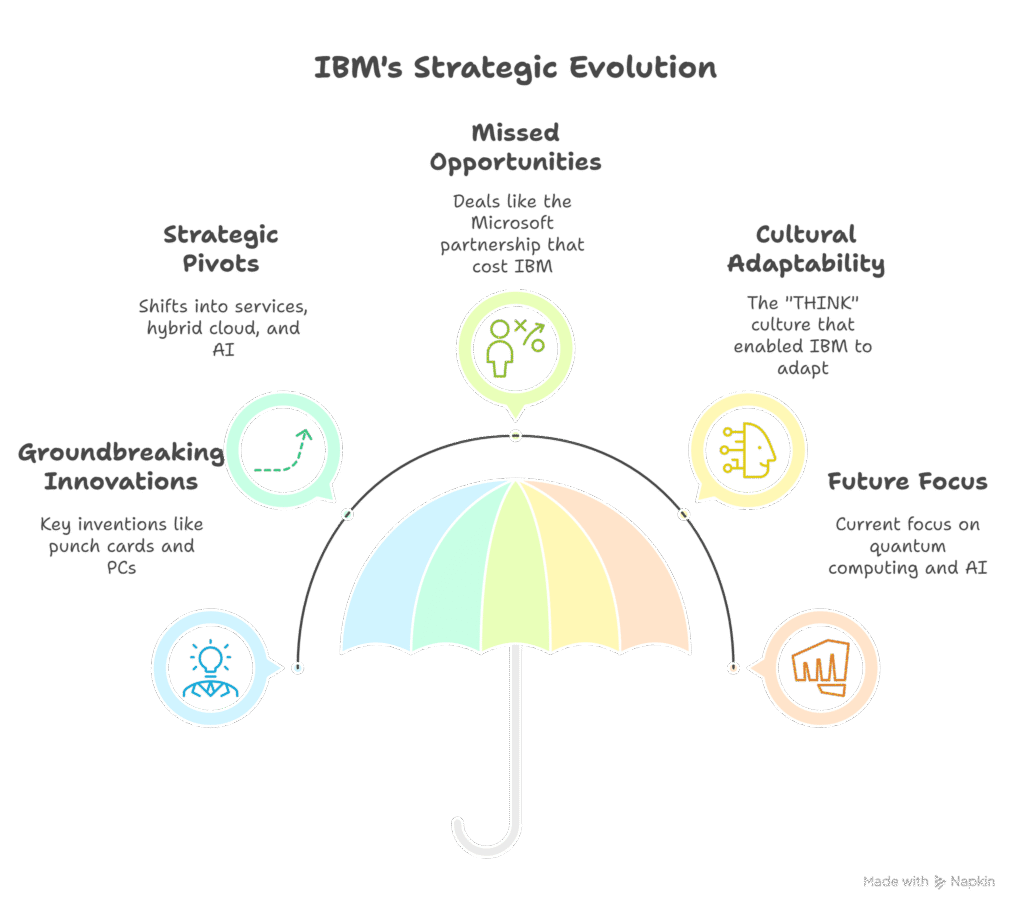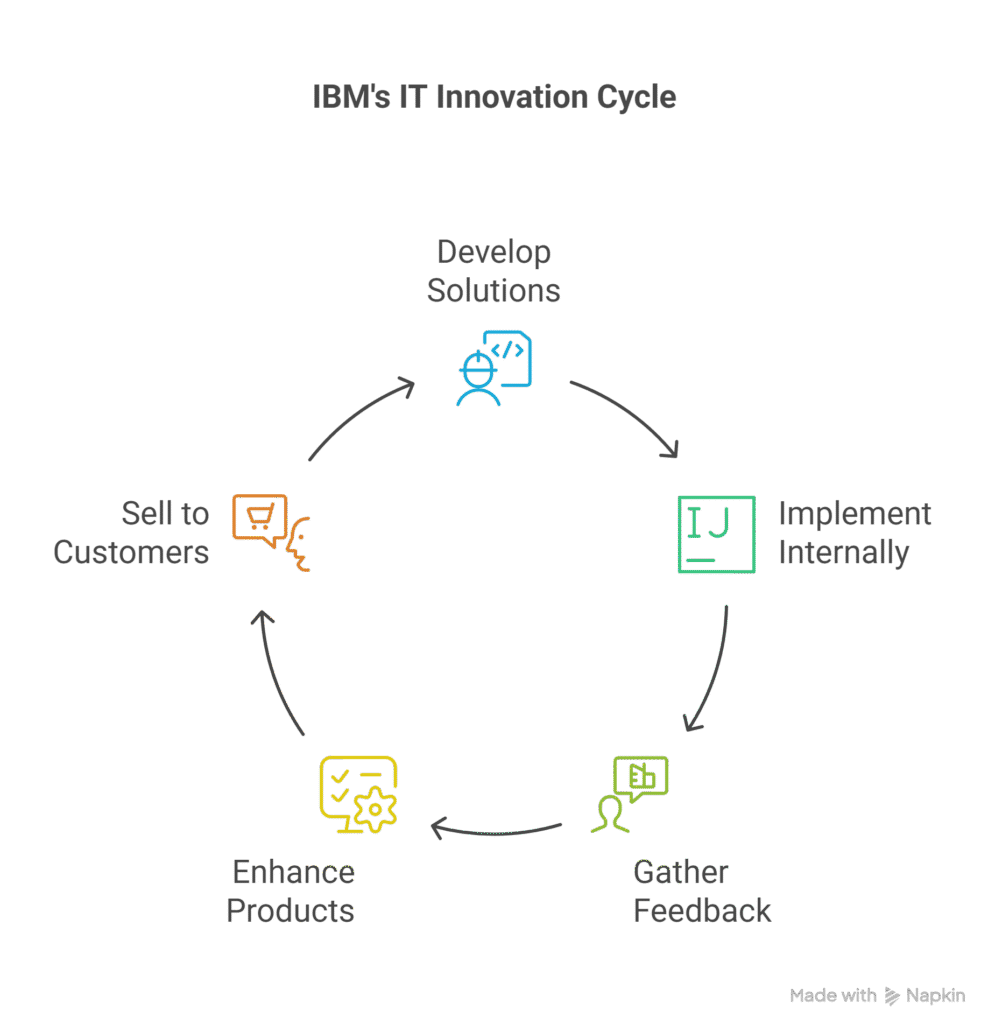Economic policy debates often reflect the enduring tension between classical free-market principles and the need for strategic government intervention. Adam Smith, the father of modern economics, championed free trade and the “invisible hand” of the market, arguing that open markets and limited government interference maximize prosperity over the long run. Yet, as modern Keynesian economists emphasize, including thinkers like Thomas Sowell who bridge classical and pragmatic views, there are times when active policies, such as targeted tariffs or fiscal measures, can help stabilize the economy, protect critical industries, and sustain employment during periods of imbalance or external shocks. Both Smith and Keynes shared the insight that keeping money circulating and markets functioning is essential, but they differed on how and when government should intervene. This nuanced perspective frames the analysis of Trump’s tariff strategy, which aims to balance short-term adjustment pains against potential long-term economic resilience.
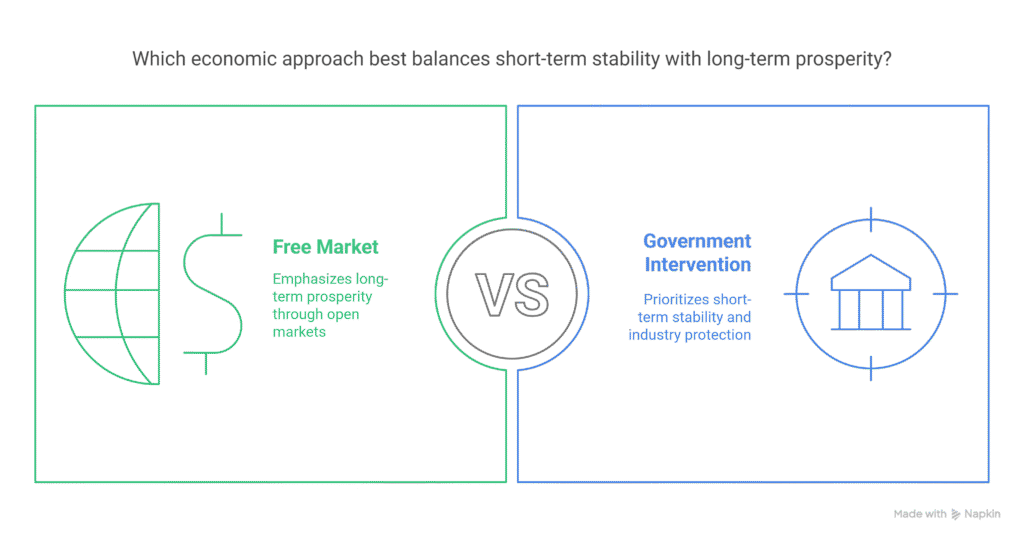
The recent implementation of President Donald Trump’s comprehensive tariff strategy has sent ripples through global markets, prompting intense debate among economists, business leaders, and policymakers. While much attention has focused on immediate market reactions and short-term challenges, there are compelling arguments for potential long-term economic benefits that could strengthen America’s competitive position globally. This analysis explores how the tariff strategy might yield positive outcomes beyond the initial adjustment period.
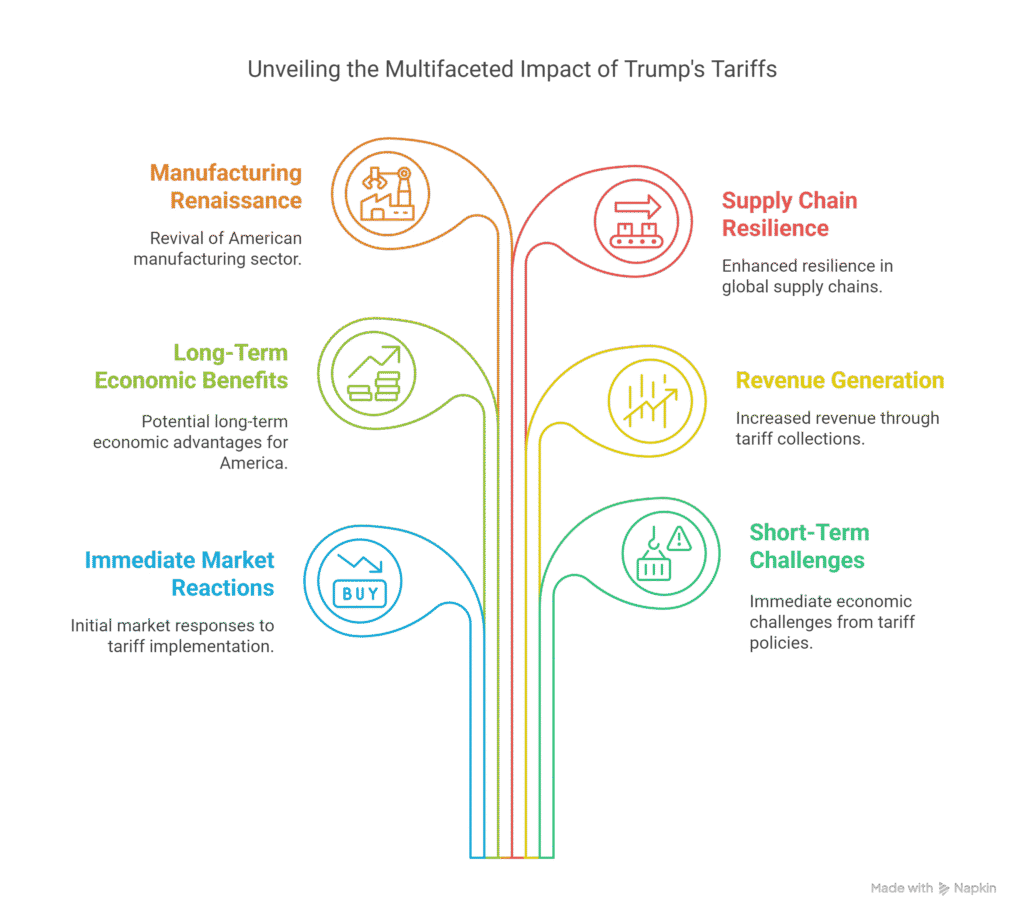
Understanding Trump’s Tariff Implementation and Goals
On April 2, 2025, President Trump signed an executive order declaring a national emergency related to foreign trade practices and implementing a sweeping tariff strategy. The plan includes a baseline 10% tariff on almost all foreign imports, with significantly higher rates for countries with which the United States has substantial trade deficits. China faces particularly steep tariffs of 145%, while the European Union faces a 20% rate, and other major trading partners face customized rates.
The stated objectives behind this approach include:
Addressing persistent U.S. goods trade deficits
Rebuilding domestic manufacturing capacity
Strengthening critical supply chains
Reducing dependency on foreign adversaries for defense-industrial needs
Creating incentives for reciprocal trade relationships
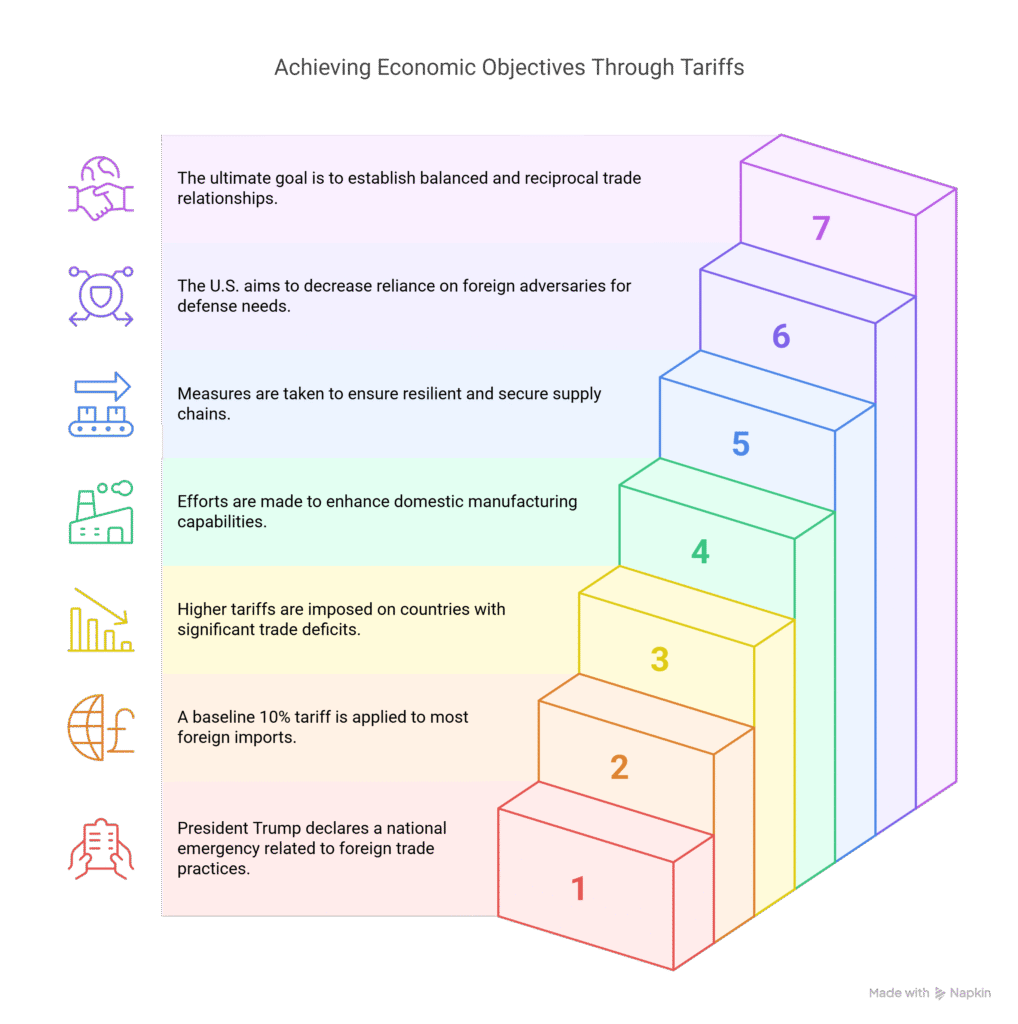
Immediate Market Reactions and Short-Term Challenges
Financial markets have experienced significant volatility in response to the tariff announcements, with stocks initially losing trillions in value before partially recovering after some tariffs were temporarily suspended. Many economists have expressed concerns about potential negative impacts, with the International Monetary Fund’s World Economic Outlook reducing its global growth forecast from 3.3% to 2.8% for the year.
The Penn Wharton Budget Model projects that the tariffs could reduce long-run GDP by approximately 6% and wages by 5%. Additionally, businesses are grappling with how to manage increased costs, with 45% of supply chain executives planning to pass costs to customers as their primary mitigation strategy.
Potential Long-Term Economic Benefits
Despite these short-term challenges, several potential long-term benefits could emerge from the tariff strategy if properly implemented and managed:
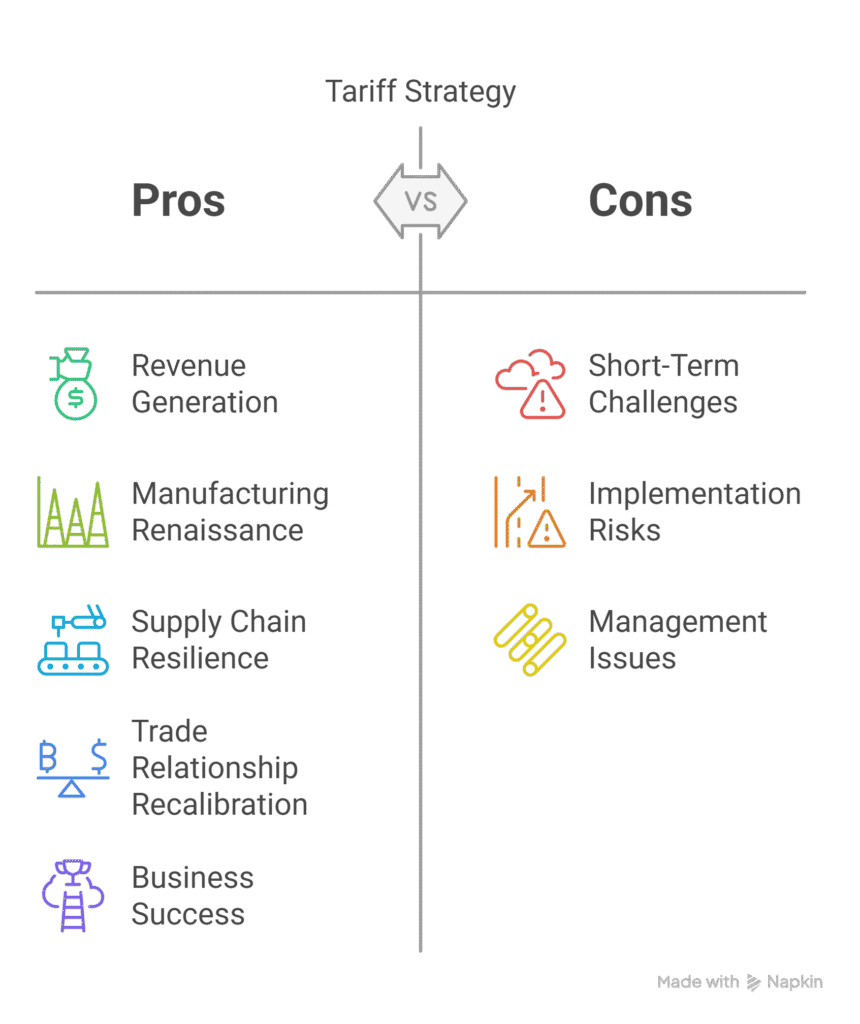
Revenue Generation and Debt Reduction
The tariff plan is projected to generate substantial revenue-potentially over $5.2 trillion over ten years on a conventional basis. This significant revenue stream could be directed toward reducing the federal debt, which has been growing faster than GDP. Debt reduction could eventually lead to lower interest rates and create more favorable conditions for private investment in the long run (Wharton analysis).
Manufacturing Renaissance and Supply Chain Resilience
While transitional costs will be significant, the tariffs could accelerate the reshoring of critical manufacturing capabilities to the United States. This process may prove valuable for national security and create new high-quality jobs within domestic borders. As Gartner analysts suggest, forward-thinking companies that “reinvent” or “reinvigorate” their operations could develop new capabilities that drive competitive advantage in the changing trade environment.
According to Gartner’s five pathways for CSCOs, chief supply chain officers should recognize that “tariff volatility is a multiyear, dynamic event” and continually evaluate opportunities to strengthen their operations. Companies that adapt effectively could emerge stronger with more resilient, localized supply chains that are less vulnerable to global disruptions.
Strategic Trade Relationship Recalibration
The Trump administration argues that the tariff strategy will ultimately lead to more reciprocal trade relationships. By using America’s purchasing power as leverage, the goal is to negotiate better terms with trading partners who have historically imposed higher tariffs or non-tariff barriers on American goods. Recent research in the American Economic Review explores how tariffs impact prices and trade relationships.
While disruptive in the short term, this approach could potentially lead to more balanced trade relationships over time. As CFOs develop more sophisticated strategies for navigating the new trade landscape, businesses may discover new efficiencies and market opportunities. For broader context, the Journal of Economic Perspectives offers accessible, peer-reviewed analysis on trade and economic policy.
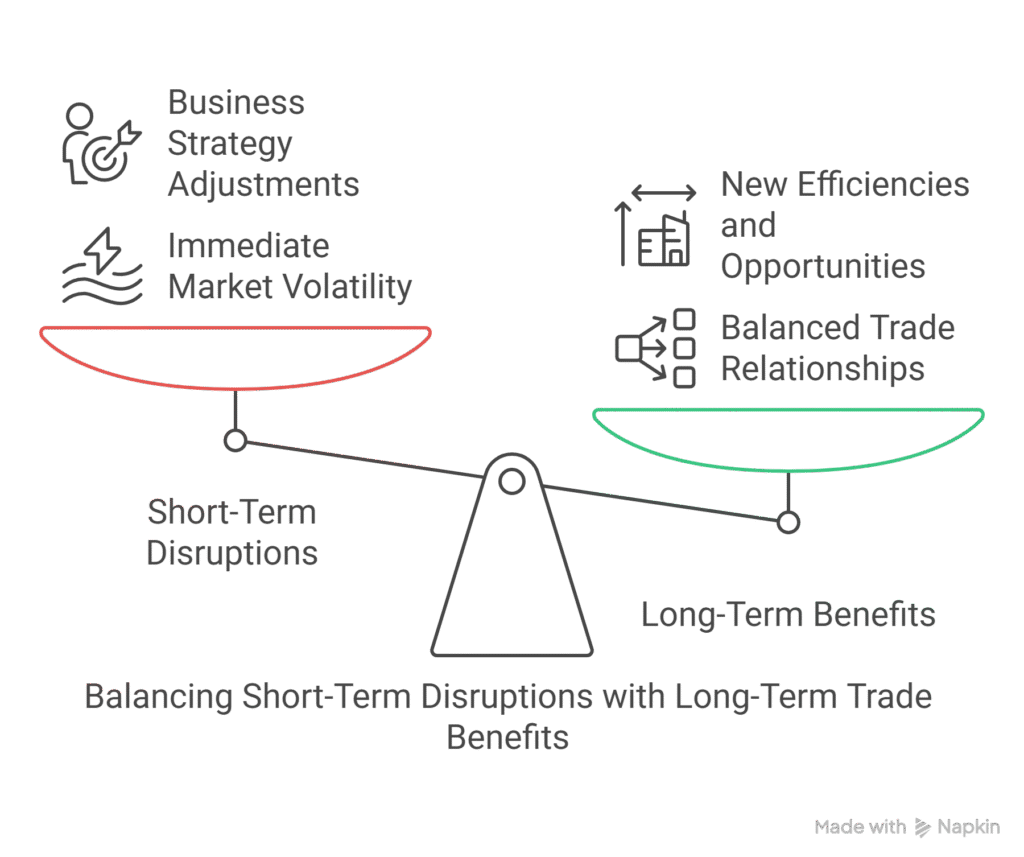
Business Response Strategies for Long-Term Success
Forward-thinking businesses are already developing comprehensive strategies to not just survive but potentially thrive under the new tariff regime:
Supply Chain Transformation
Gartner has identified five pathways for companies to manage tariff volatility:
Retire – Reassessing product viability
Renovate – Making overdue adjustments to products
Rebalance – Preparing for policy changes and competitor responses
Reinvent – Investing in new projects in unimpacted markets
Reinvigorate – Extending competitive advantages for early winners
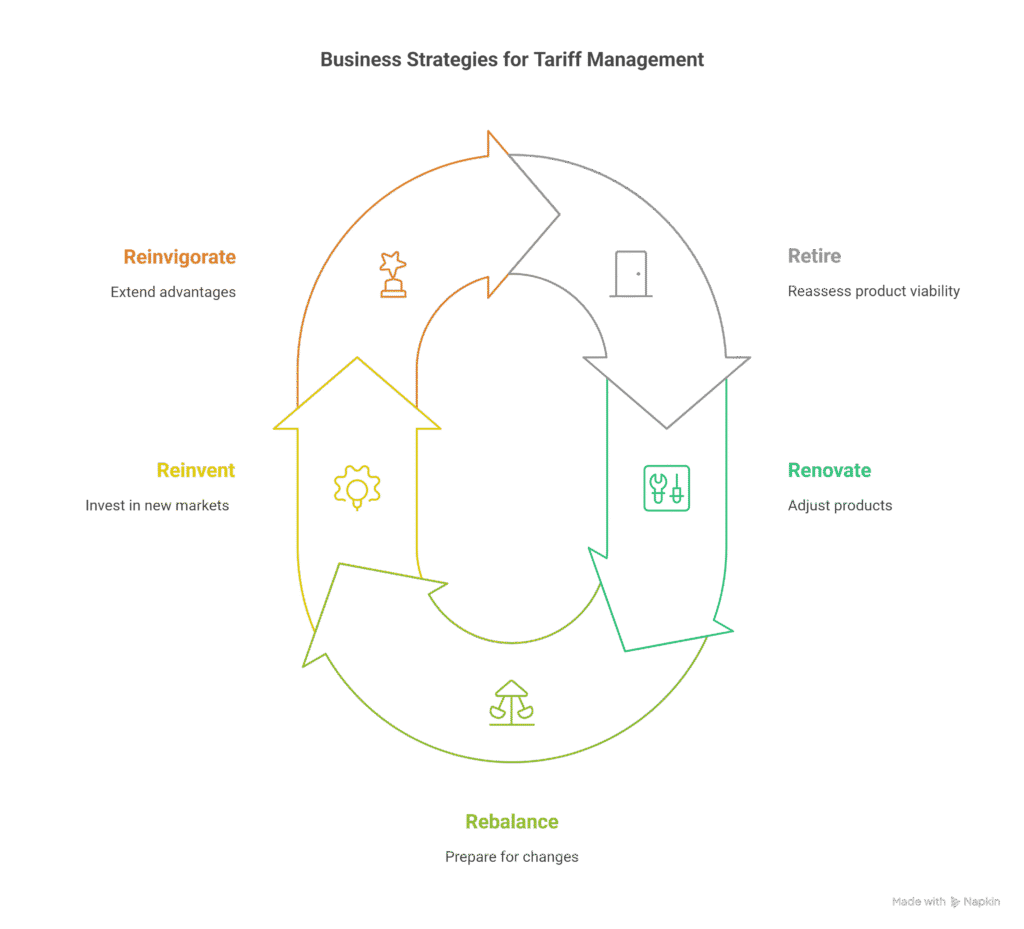
Companies that can successfully execute the “Reinvent” or “Reinvigorate” strategies have the best chance of driving new competitive advantages from ongoing tariff volatility. This may include expanding domestic manufacturing capacity or repositioning within markets to capture share from competitors who adapt more slowly.
Strategic Financial Planning
CFOs are developing sophisticated responses to the tariff environment, focusing on several key areas:
Updating financial risk assessments
Enhancing forecasting and scenario planning capabilities
Adjusting pricing strategies
Implementing cost reduction initiatives
Revising transfer pricing strategies
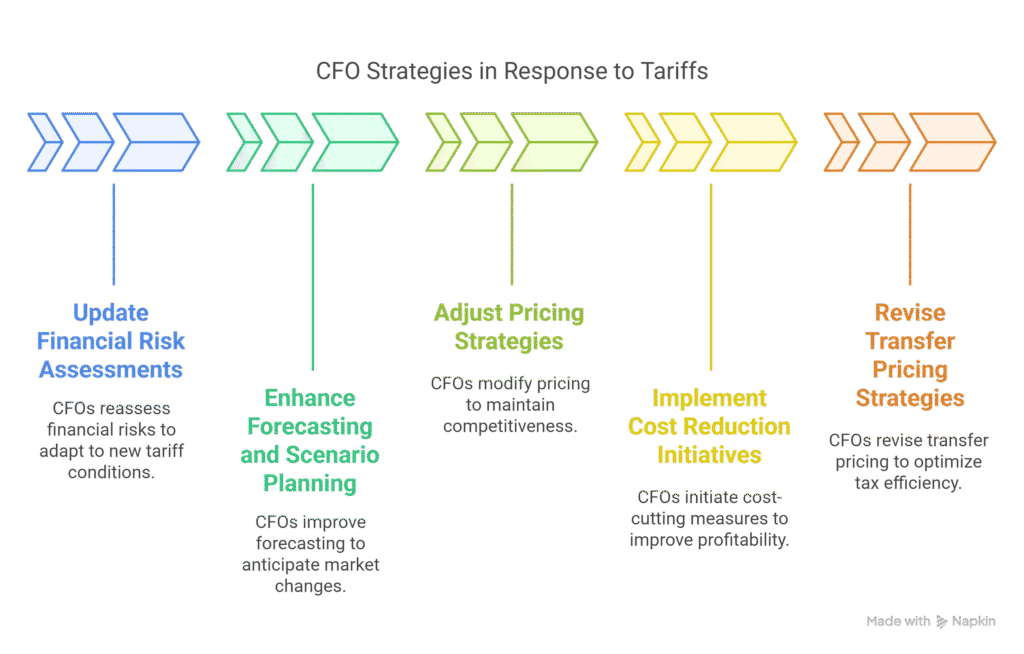
These financial adaptations could lead to more resilient business models with improved agility to respond to future market changes.
Conclusion: Navigating the Path to Potential Long-Term Benefits
While economic models generally predict negative impacts from tariffs, the actual outcomes will depend significantly on how businesses, consumers, and policymakers respond to the new trade environment. If the tariff strategy successfully encourages domestic investment, improves trade terms with major partners, and reduces federal debt, there could be meaningful long-term benefits despite the painful adjustment period.
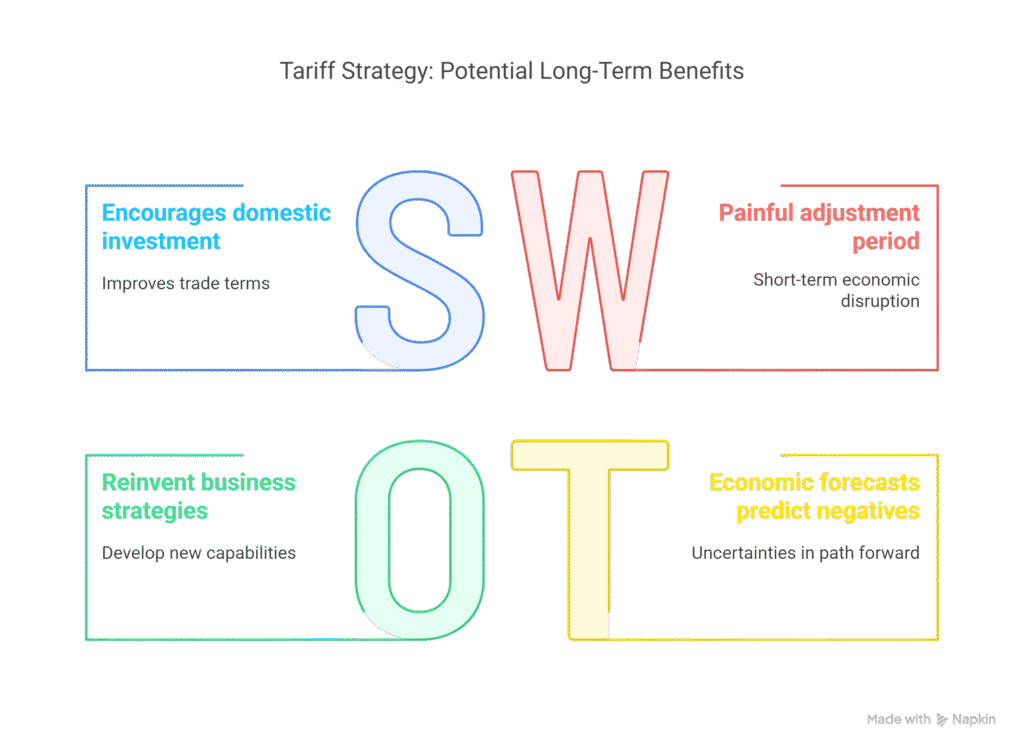
As Gartner analysts note, “The long-term winners will reinvent or reinvigorate their business strategies, developing new capabilities that drive competitive advantage.” Businesses that view the current disruption as an opportunity to transform their operations may find themselves better positioned for success in the evolving global economy.
For consumers and investors, understanding that significant economic transitions typically involve short-term disruption before potential long-term benefits materialize will be key to maintaining perspective during this period of adjustment. While the path forward contains many uncertainties, the ultimate goal of a stronger, more resilient American economy remains the north star of this controversial trade strategy.

